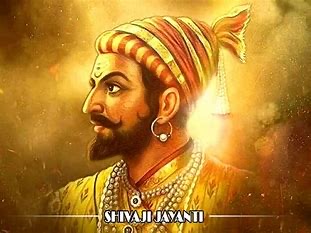CONTENTS
- Chhatrapati Shivaji
- Jal Jeevan Mission
Chhatrapati Shivaji
Context:
Recently, the exhibition depicting 115 oil paintings of Shivaji Maharaj was organised by the Indira Gandhi National Centre for the Arts (IGNCA) and the National Gallery of Modern Art (NGMA) to mark the 350th anniversary of the coronation of Chhatrapati Shivaji .

Relevance:
GS I- History
Dimensions of the Article:
- About Chhatrapati Shivaji
- Shivaji and the Mughals
About Chhatrapati Shivaji
- Born on February 19, 1630, at Shivneri Fort in Pune.
- He was born to Shahaji Bhonsle, a Maratha general who ruled the Bijapur Sultanate’s jagirs of Pune and Supe. Shivaji’s mother was Jijabai, a devout woman who had a strong religious influence on him.
- Shivaji’s name was derived from the name of a provincial deity, Goddess Shivai.
- He created the Maratha Empire by carving out an enclave from the crumbling Adilshahi sultanate of Bijapur.
- He was formally crowned Chhatrapati (Monarch) of his dominion in Raigad in 1674.
- Religious tolerance and functional integration of the Brahmans, Marathas, and Prabhus ensured the kingdom’s security.
- With the support of a disciplined military and well-structured administrative organisations, he constructed a competent and progressive civil rule.
- He had a ministerial council (Asht Pradhan) to advise him on state problems, but he was not bound by it. He had the authority to appoint or fire them.
- He pioneered non-conventional methods (guerrilla warfare) and used strategic elements such as terrain, speed, and surprise to innovate military tactics.
- To defeat his larger and more powerful opponents, he concentrated on pinpoint attacks.
- Although the courageous warrior died in 1680, he is remembered for his bravery and intelligence.
Shivaji and the Mughals
- Shivaji’s meteoric rise posed challenges to the suzerainty of the Mughals.
- His first direct encounter with the Mughals was during Aurangzeb’s Deccan campaigns of the 1650s.
- As Aurangzeb went North to fight for the Mughal throne, Shivaji was able to seize further territory.
- His tactics against the Mughals were adapted to the specific nature of his force and the flabby Mughal armies. Using swift cavalry attacks, he would raid and pillage Mughal strongholds.
- While on the rare occasion he would engage in battle to actually capture and hold Mughal positions, most often, he would simply cause much menace, raid the treasury, and leave with the Mughals in terror and disarray.
- Famously, in 1664, he attacked the port of Surat (now in Gujarat) and plundered one of the richest and busiest commercial towns of Mughal India while the local governor hid in a nearby fort.
- As the legend of Shivaji and the physical sphere of his influence grew, Aurangzeb sent a 100,000-strong, well-equipped army under Raja Jai Singh I to subdue him in 1665.
- After putting up a valiant fight, Shivaji was besieged in the Purandar hill fort.
Jal Jeevan Mission
Context:
The Central Government is conceiving a “new project” to ensure that rural households, which were provided taps under the ambitious Jal Jeevan Mission but had not yet been able to avail water, would soon be provided potable water.
Relevance:
GS II- Government policies and Interventions
About Jal Jeevan Mission:
Nodal: Ministry of Jal Shakti
- Jal Jeevan Mission, a central government initiative under the Ministry of Jal Shakti, aims to ensure access of piped water for every household in India.
- National Rural Drinking Water Programme (NRDWP) was restructured and subsumed into Jal Jeevan Mission (JJM) – to provide Functional Household Tap Water (FHTC) to every rural household with service level at the rate of 55 lpcd i.e., Har Ghar Nal Se Jal (HGNSJ) by 2024.
Implications
- Supply of water to all households is a basic necessity
- Reduction in water borne diseases which was due to due to consumption of substandard water
Challenges
- Critical situation of Decrease in ground water table.
- Water demand and supply is a miss match
- Contamination of local ground level sources of water like, ponds lakes and wells.
- Sustaining the provision of water to all households is a challenge, not just starting it.




